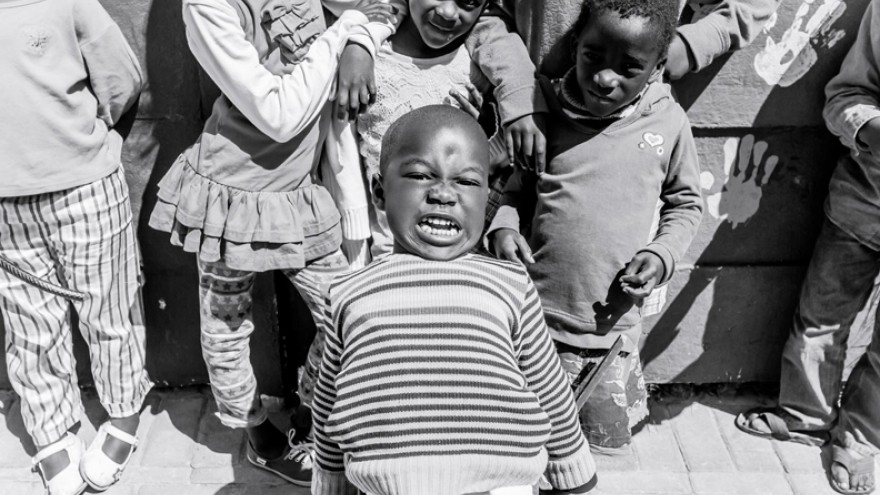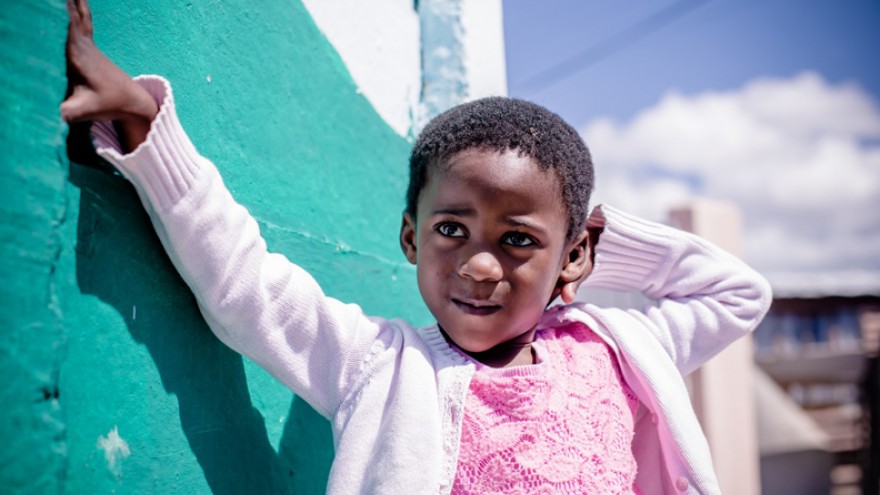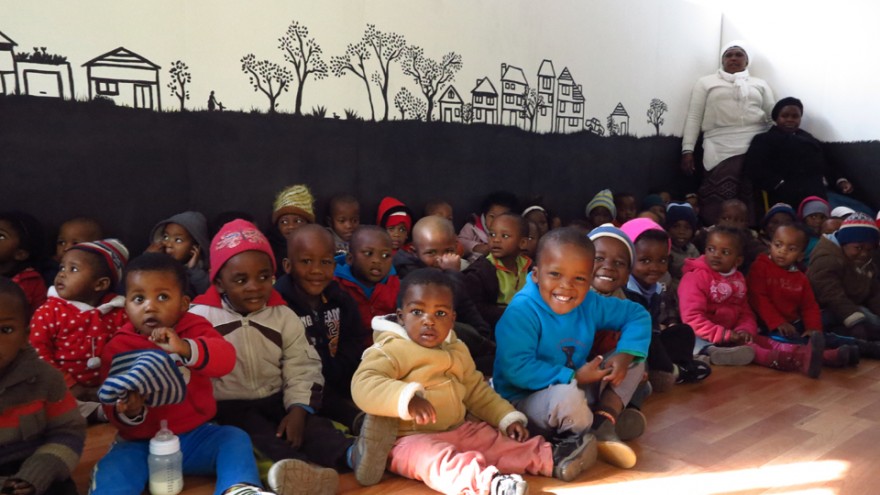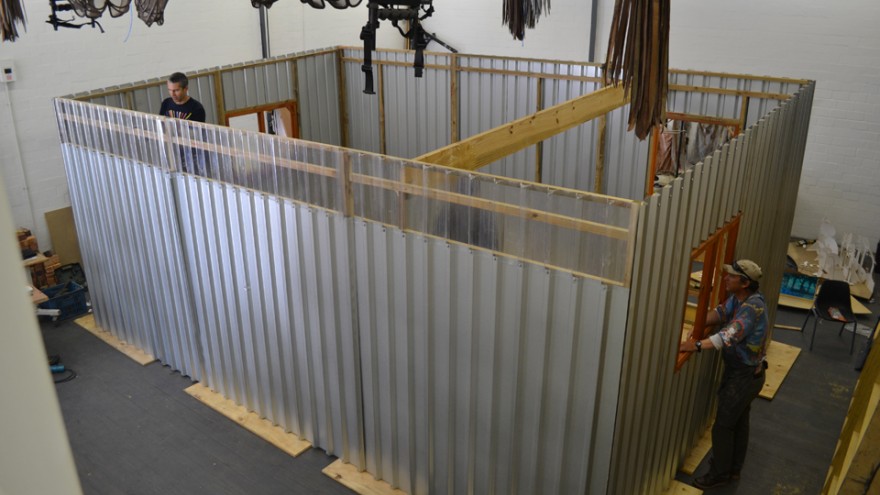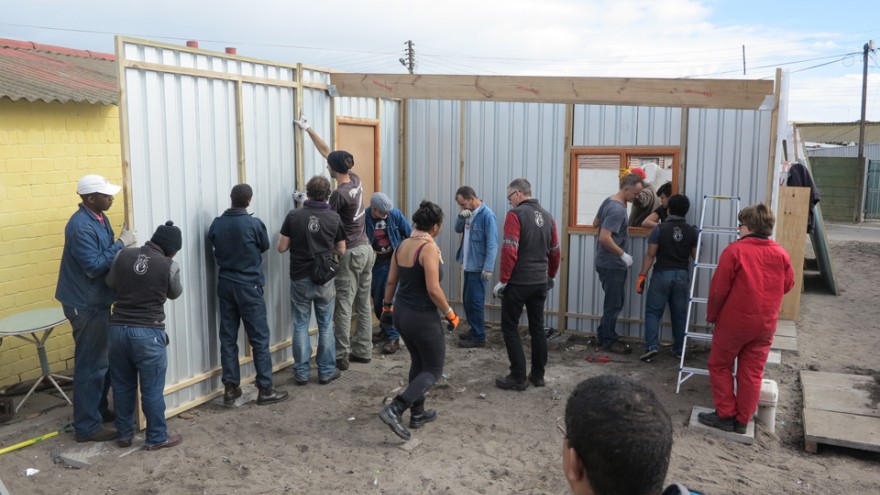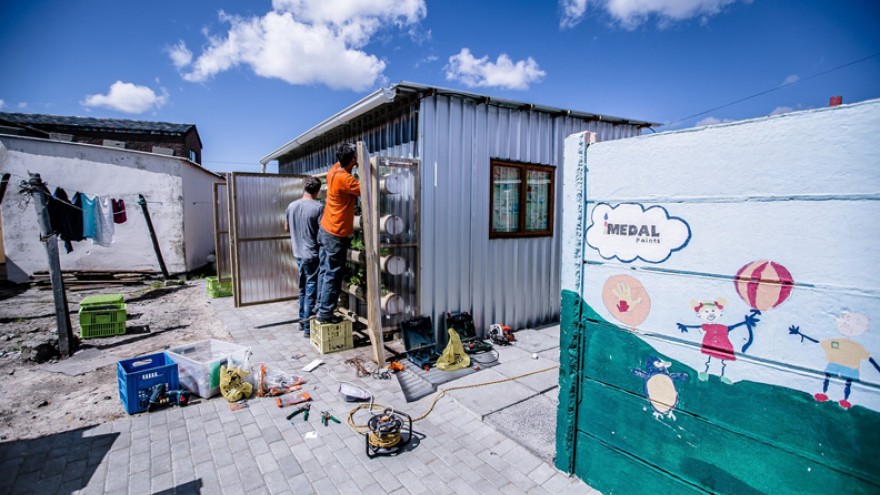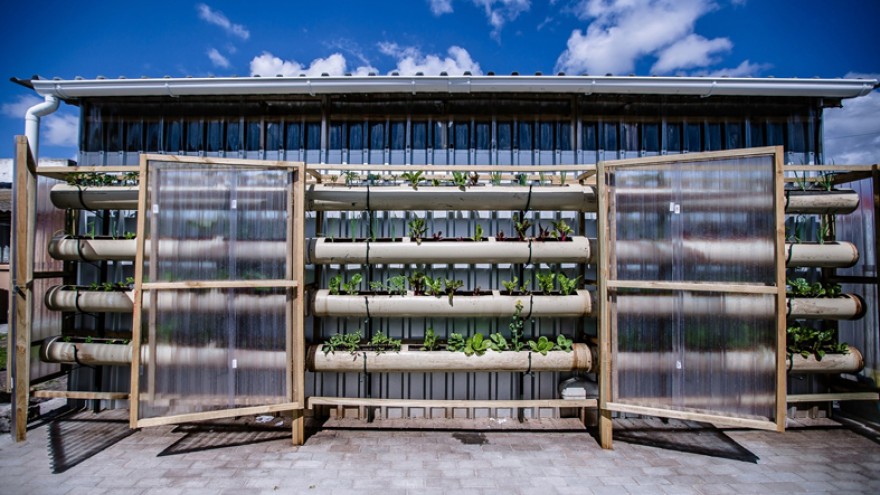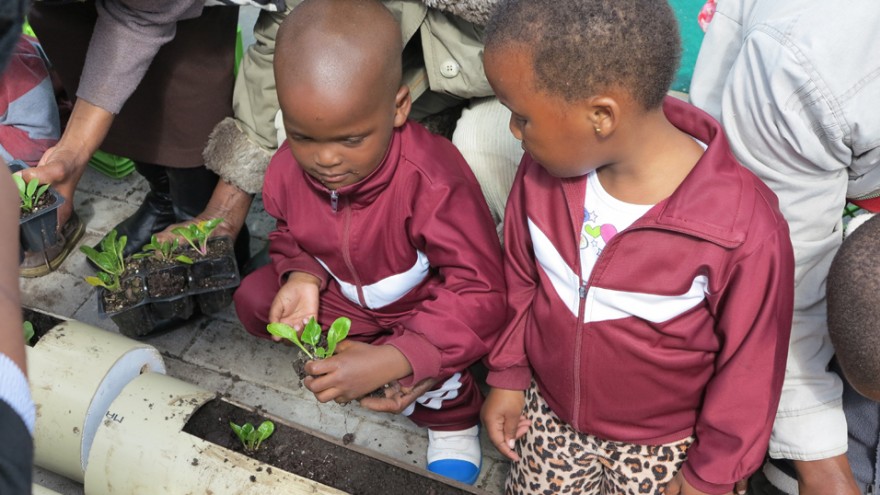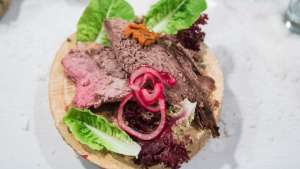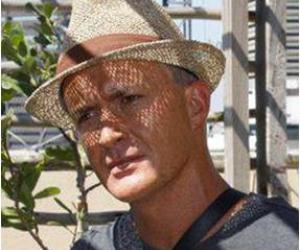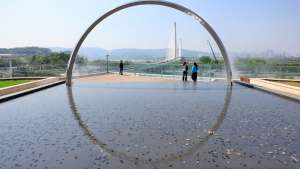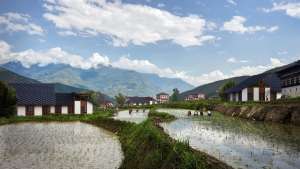From the Series
Stephen Lamb and Andrew Lord of Touching the Earth Lightly (TEL) were invited by the City of Cape Town’s Environmental Resource Department to partner on the re-building of a dilapidated crèche in Langa in honour of Mandela Day. The result is a fireproof, flood-proof temporary structure that also has the capacity to produce food.
Lamb and Lord also designed and built a low-tech vertical food garden, protected from the harsh Cape Town weather on the sun-facing wall of the structure. In addition to the structure being fire-boarded, insulated and raised off the ground, the food garden (a working prototype) enables 45 children to benefit from its harvest without taking up additional space.
Lamb writes about the project for designindaba.com:
The structure was built off-site, in unit components, at the Handspring Puppet Company workshop, driven to Langa and assembled in two hours using minimal tools. The vertical food garden was installed in the following three weeks.
The design is aimed at starting a conversation around three pressing design challenges faced by thousands of Cape Town residents each day. The first being runaway shack fires; the second challenge is mitigating against the effects of ground water flooding; and the third is around exploring innovative, low-tech solutions for food security systems where there is no space.
The design brief we gave ourselves was aimed entirely at suggesting an alternative to governments handing out food, blankets and more flammable building materials each time there is a shack fire or flooding. We want to use design to rid Cape Town of these two medieval scourges forever. This can only be done by using simple, empathetic design principles to establish strong partnerships between community structures and local government.
The food garden is protected from the wind and designed to create its own "vertical hothouse" very simply, using basic materials and re-purposed water pipes. It is irrigated by hand and water is sourced from a standpipe, using a bucket. The produce of the food garden supplements the diets of the pupils, as the crèche cooks two meals each day for 45 children between the ages of five and eight.
The food garden attempts to redefine and reinterpret the vertical sun-facing space on temporary structures on the Cape Flats as inner-city, arable area. We think informal settlements are too "full" for food security gardens, but the sun-facing walls are all empty. Each structure "owns" its sun-facing walls.
The design of the Gege crèche is inspired by the word "empathy". There are no VIPs – just very important pupils and very important plants.
We are all learning; each day getting better at illustrating how design can respond to the needs of people in real, meaningful and relevant ways.
We call on the design community of Cape Town to join in on these efforts. Success here is a direct measure of collaborative effort.

